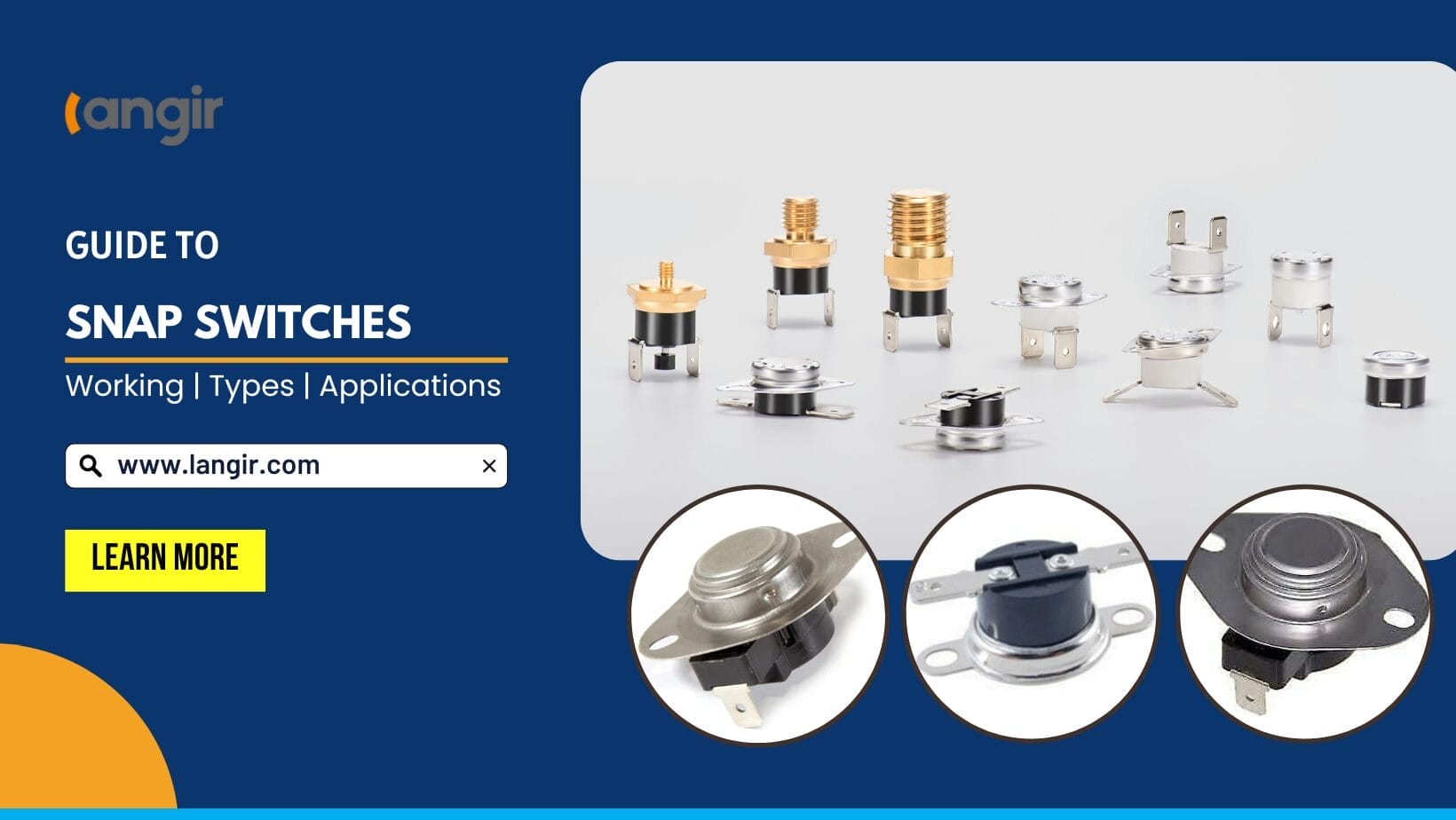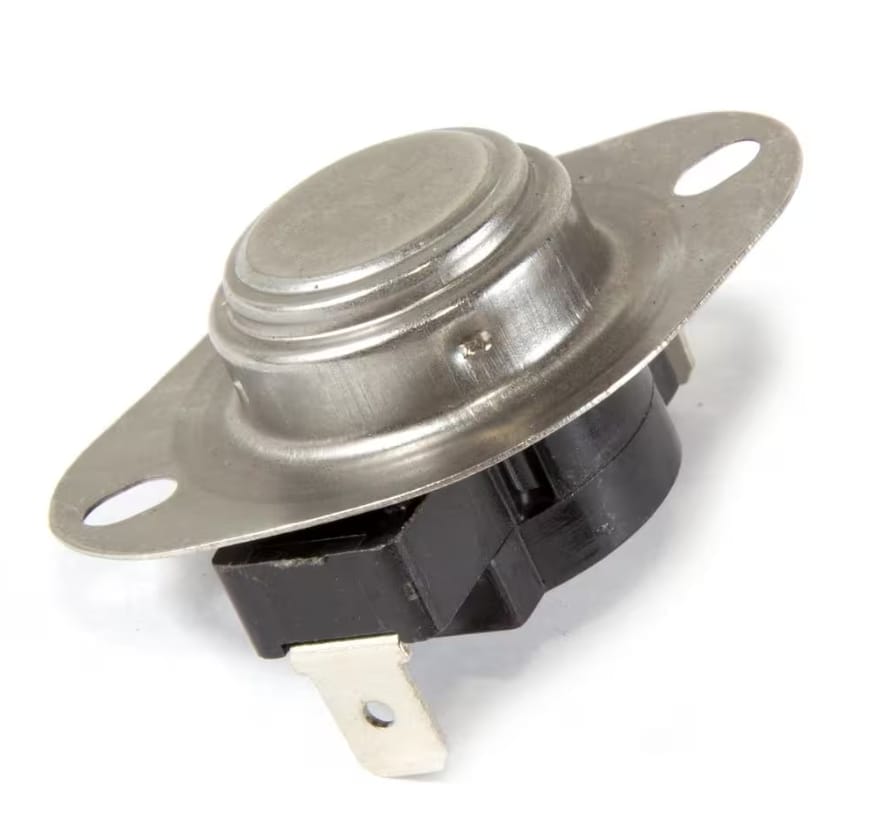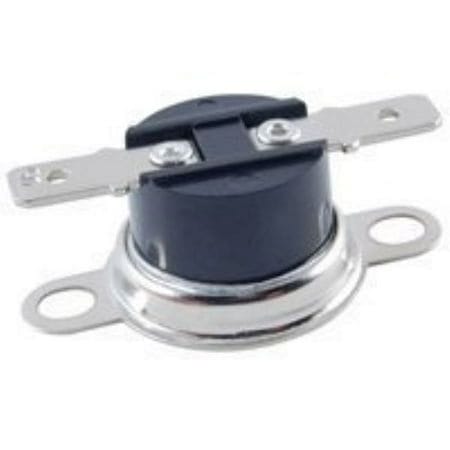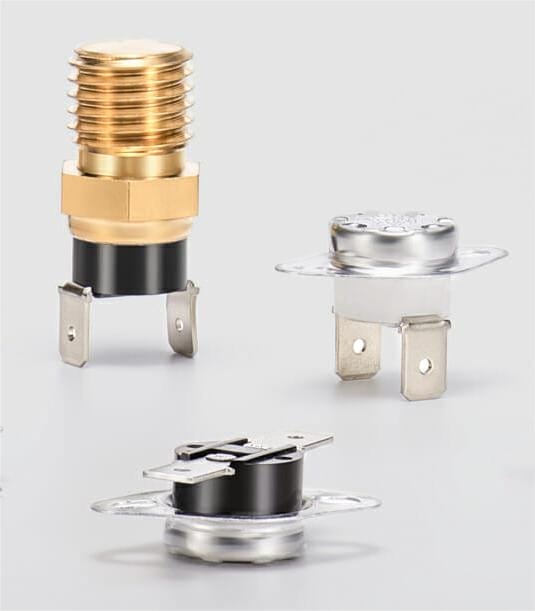
A snap switch, or a snap action switch or micro switch, has been an essential component of electrical and electronic systems since 1932. Although many advanced types of switches are available now, snap switches still have their place in industries like electronics, manufacturing, automotive, etc. They are built to last longer and have a robust design that withstands harsh environmental conditions.
On top of this, the compact size of snap switches makes them suitable for space-limited applications. Meanwhile, the quick response time is ideal for safety mechanisms and emergency shut-offs. If you want to know more about a snap switch, its applications, and its types, let’s dive in!
What is a Snap Switch?
A snap action switch is a fantasy electrical switch that rapidly changes its state from open to closed as you apply a small amount of physical force to its actuator. This type of switch is characterized by its quick action, producing an audible “snap” when the contacts transition between on and off positions. It finds applications in household appliances, automotive controls, industrial machinery, and consumer electronics.
Let’s discuss the components of a snap action switch:
The actuator is the external part of the snap switch that you interact with. As you apply physical force to the actuator, it causes the switch to instantly change its state, either from open to closed or vice versa. Commonly, the snap switch actuator comes in various forms, such as a lever, roller, plunger, or button.
The snap action switch also has electrical contacts normally held in one position — either open or closed. When you push the switch, these contacts quickly connect and let electricity flow. The switch makes a little “snap” sound when this happens. When you release the switch, the contacts separate, and everything returns to how it was before.
Snap action switches have a snap mechanism based on a spring-loaded design. When you apply a specific force to the actuator, the snap mechanism rapidly releases. This causes the actuator to move the contacts quickly and decisively to their new position.
Terminals are the electrical connections on the snap action switch that connect it to an external circuit. Snap action switches typically have two or more terminals for wiring.
How Does a Snap Switch Work?
A snap switch operates straightforwardly. It consists of a part you push or press —the actuator. When you apply pressure to this actuator, it triggers a quick movement of internal components called contacts.
The contacts join and allow the movement of electric current. You can often hear and feel a slight “snap” when this happens. Once you release the pressure on the actuator, everything returns to its original state. This makes snap-action switches excellent for tasks requiring rapid and precise electrical switching.
Types of Snap Action Switches
Here are some of the types of snap action switches:
Actuator Styles
Let’s discuss the many types of snap action switches depending on the actuator styles:
Lever snap action switches have an extended lever as an actuator, often used in applications where the switch needs to be triggered by a physical object or where a simple manual operation is required.
Plunger switches use a push-button style actuator. They are often found in devices like doorbells or elevators, where pressing the button initiates an action.
Roller switches have an actuator with a rotating roller. They are suitable for applications where the actuator needs to roll along a surface or track to trigger the switch.
Poles Styles
Here are the types of snap action switches based on the number of poles or terminals:
SPDT snap action switches have three terminals, allowing a single input to alternate between two possible outputs. They are commonly used in applications where a change in the circuit’s path is needed with a single switch action, such as in household appliances and electronic devices.
DPST snap action switches consist of four terminals, effectively serving as two separate switches operated by a single actuator. This is advantageous for scenarios where two separate circuits need simultaneous control, ensuring coordinated operation, and is commonly found in industrial machinery and control panels.
DPDT snap switches have six terminals, offering two independent switches that change their state together. They are well-suited for complex switching tasks involving multiple circuits, such as applications requiring versatile control options in automotive systems and specialized industrial equipment.
Working
The types of snap switches based on working are:
Snap Action Thermostat
A snap action thermostat or snap disc thermostat is a temperature-sensitive switch that rapidly and reliably opens or closes an electrical circuit when a specific temperature is reached. It uses a bimetallic strip as the sensing element. When the temperature changes, the bimetallic strip bends, causing the snap action mechanism to operate. Common applications include thermostats for temperature control in appliances like ovens and water heaters.
Magnetic Snap Action Switches
Magnetic snap action switches use a magnetic field to trigger the snap action mechanism. The switch rapidly changes its state when a specific magnetic force is applied or removed. They are often found in security systems and door sensors.
Advantages of Snap Action Switches
Here are the many advantages of snap action switches that make them the best for many applications:
The primary advantage of snap action switches is their ability to provide highly rapid and precise switching. As soon as actuated, they move the internal contacts from one state to another in a fraction of a second, producing an audible and tactile “snap.” This rapid response is crucial in applications where precise electrical control is essential, such as emergency shut-offs or safety mechanisms.
Snap action switches are known for their robust design and high level of reliability. They easily withstand a large number of mechanical actuations without deteriorating performance. This reliability is particularly valuable in critical applications where consistent and dependable switching is necessary.
At last, snap-action switches provide excellent value for money due to their reliability and longevity. Durable construction and their ability to withstand wear and tear reduces maintenance and replacement costs in the long run. It’s an important consideration for both manufacturers and end-users, contributing to overall cost savings in product design and operation.
Disadvantages of Snap Action Switches
Here’s a disadvantage of a snap action switch that you should know before making your purchase:
-
Limited Current Handling
Snap switches are typically made for low to moderate current loads. In applications requiring the control of high-current circuits, such as industrial equipment with substantial power requirements, snap-action switches may not be suitable. Using them in such cases can lead to premature wear and potential overheating issues.
Applications of Snap Action Switches
Here are the applications of snap action switches:
Household Appliances
Snap action switches are helpful in various household appliances – refrigerators, washing machines, ovens, and dishwashers to control functions such as temperature, water level, and door latches. They may turn off the heating element in an oven as soon as a desired temperature and time is reached or turn off the washing machine once a round is complete.
HVAC Systems
Heating, ventilation, and air conditioning (HVAC) systems use snap switches for tasks like regulating temperature, controlling fan speed, and ensuring safety by shutting off heating elements in case of overheating.
Automotive Industry
Snap action switches are found in vehicles to operate functions like power windows, door locks, brake lights, and cruise control. When you press a button or step on the brake pedal, a snap switch can trigger the corresponding action.
Industrial Machinery
Snap switches are essential in industrial equipment for tasks such as detecting the position of moving parts, initiating safety shutdowns, and controlling conveyor systems. They ensure precise and reliable control in manufacturing processes.
Aerospace
In aircraft and spacecraft, snap switches are used in critical systems like landing gear controls, wing flap positioning, and emergency shut-offs. Their rapid response is crucial for safety in aviation.
What Factors to Consider When Purchasing a Snap Action Switch?
Here are some factors that you must consider when finalizing a snap action switch:
The durability of a snap action switch is paramount, especially if it will be subjected to frequent use or harsh environmental conditions. Assess the quality of materials used in its construction and its ability to withstand wear and tear over time. A durable switch ensures long-term reliability and reduces maintenance costs.
Understanding the electrical rating of the switch is essential to ensure it can handle the electrical load of your application. Check the current and voltage ratings, and make sure they match or exceed the requirements of your circuit. This prevents overheating and ensures safe and efficient operation.
Different applications may require varying levels of actuation force of the switch and different travel distances for the actuator. Consider the force necessary to trigger the switch and the distance the actuator needs to travel to change the switch’s state. This ensures that the switch is compatible with the force available in your application and provides the desired tactile feedback.
Also, determine the range of temperatures your snap switch will encounter in its intended environment. Choose a switch that can reliably operate within this temperature range. Extreme temperatures affect the performance and lifespan of the switch, so selecting one that matches your environmental conditions is crucial.
Cost is always a significant consideration in any purchase decision. Evaluate the cost of the snap action switch to your budget and the overall value it offers. Keep in mind that higher-quality switches may have a higher upfront cost but result in long-term savings due to reduced maintenance and replacement expenses.
Best Snap Switches for You!
Let’s discuss the best snap action switch options that you can try for your home or industry:
KSD301 Snap Action Thermostat
The KSD301 Snap Action Thermostat series is a compact and versatile addition to our thermal relay family. These thermostats are made with precision, featuring a metal cap and bimetal discs at their core. The magic lies in their ability to swiftly snap into action when sensing temperature changes, effectively controlling circuit connectivity. What sets them apart are their steadfast temperature fixation, dependable snap action, reduced flashover, extended operational life, and minimal radio interference.
With an electrical rating of 16A 125V AC (for resistive loads), Langir’s KSD301 snap action thermostats are engineered to provide reliable temperature control solutions. Their rapid response time and ability to handle high currents make them perfect for various applications. From household appliances to industrial machinery and even specialized fields like medical equipment and laboratory instruments, these snap-action switches offer dependable temperature control.
L22B High Current Explosion Proof Switch
The L22B High Current Explosion Proof Switch is a top-tier snap action switch for your control needs. This robust and durable switch features a light-emitting diode light, boasting different bushing diameters ranging from 12mm to 25mm and a choice of actuator shapes. With an impressive IP65 protection rating and IK09 anti-vandal resistance, this switch is built to withstand the harshest environments.
The L22B doesn’t just offer superior protection; it also combines functionality with aesthetics, making it perfect for kiosks, ticket dispensers, and industrial settings. Its easy-to-clean design ensures a polished appearance, making it an ideal choice for high-end products. It comes in various current options, from 3A to 21A, ensuring it suits various requirements. Its snap-action and compact design make it the perfect fit for applications with limited space, promising long life, and high reliability.
Conclusion
Snap switches are versatile and dependable, serving various industries with rapid, reliable switching. From household appliances to industrial machinery, their quick response and precision make them invaluable. If you need the best snap switch, there’s no better option than Langir. We have top-notch snap action and snap disc thermostat switches that help you in the long run. So, get in touch and have complete control over your appliances!
FAQs
What is the difference between a snap switch and a limit switch?
A snap switch, also known as a snap action switch, is made for rapid and precise electrical switching, often triggered by a specific force or pressure. In contrast, a limit switch is an electromechanical device primarily used to detect the presence or position of an object.
What is a snap-acting relay?
A snap-acting relay serves as a vigilant air pressure supervisor device. When it detects that the main air supply’s pressure has fallen below a pre-defined threshold, it promptly and automatically reroutes the airflow to a secondary source. This safeguard mechanism guarantees uninterrupted operation, making it crucial in systems reliant on consistent air pressure, such as pneumatic machinery and control systems.
What is the quick break mechanism?
The quick break mechanism is a feature in certain electrical switches, like snap action switches. It ensures that electrical contacts separate and connect rapidly when the switch is opened or closed, minimizing arcing and wear. This mechanism enhances the switch’s longevity and reduces the risk of electrical faults and failures.
Send your inquiry now
All Langier News:
Read Moreelectronica 2024 Hall-Stand No.: A2 160 November 12-15, 2024 Tr...

 English
English 简体中文
简体中文







